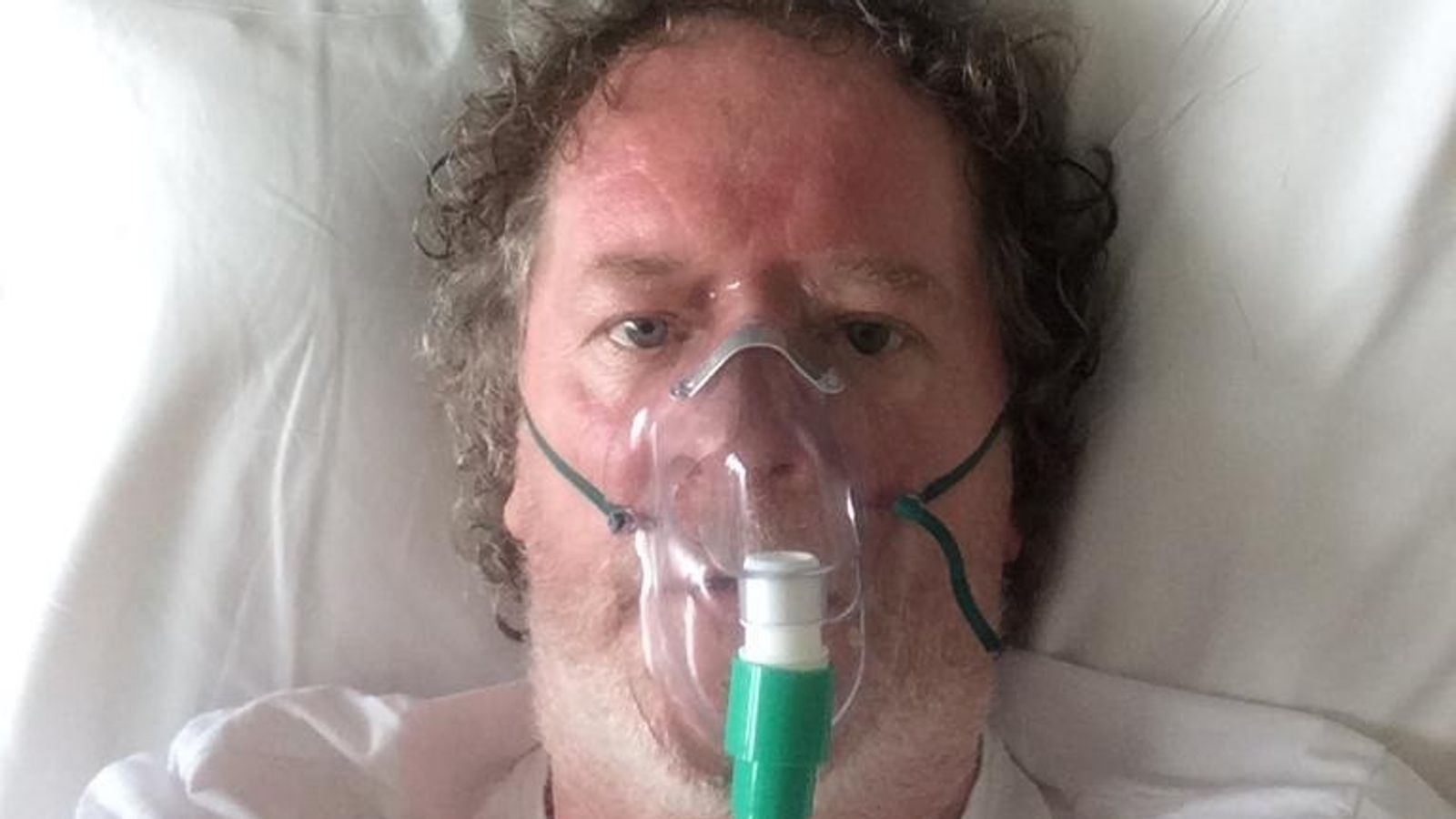Waterford, in south-eastern Ireland, epitomises the country’s coronavirus conundrum. Why is there a surge in COVID-19 cases in a nation where around 92% of all adults are fully vaccinated?
A massive 99.5% of adults over the age of 18 in Co Waterford are double-jabbed. That’s thought to be one of the highest rates of any region anywhere in the world.
But, according to the Health Protection Surveillance Centre, the county now tops the national infection league table, with a 14-day incidence rate of 1,294 per 100,000.
Tom Gallagher can’t believe his native Waterford City is the current epicentre of Ireland’s fourth COVID wave. Earlier in the pandemic, he was nearly killed by the disease.
Tom spent 66 days in the local hospital, including two stints on an incubator in intensive care. His brother and sister also caught the disease.
“I walk past the hospital all the time”, he tells Sky News. “I look up at it and just think…there are still people in there with this virus.”
Tom now suffers from long COVID, and scans have shown his lungs are scarred from his bout with the disease. The 55-year-old agrees that almost everyone he knows in Waterford has been fully vaccinated, but thinks that that has led to a degree of behavioural complacency setting in.
COVID-19: UK records another 155 daily deaths and 30,693 infections
COVID-19: Hyenas at Denver Zoo test positive in first confirmed cases for the species
COVID-19 booster jabs to be open for booking a month earlier
“It’s like people think the vaccine is the full metal jacket, that you have total immunity”, he says.
“But obviously you don’t, you know. Who I pity is the grandparents still living at home worried sick about getting this thing, of getting this virus, because it’s the vulnerable people who are still dying, people with underlying ailments.”
The current wave of infections (with daily numbers at their highest since January) differs from last winter’s because of Ireland’s successful vaccination rollout.
Hospitalisation figures, and intensive care unit admissions, are stable and decreasing slightly in recent days. It’s widely accepted the “vaccine wall” has driven serious illness and death figures down.
Some scientists feel that any public frustration with the high incidence rates is based on a misunderstanding of what the vaccines were supposed to achieve.
“The function of the vaccine is to stop illness and death, that’s the primary goal, and the vaccines are holding up, it’s great.” That’s the view of Professor Luke O’Neill, an immunologist at Trinity College Dublin, and one of the country’s best-known scientific figures during the pandemic.
Prof O’Neill says that without the wide take-up of vaccinations, the public health situation in Ireland would be far worse than the current worrying scenario.
“Without the vaccines, Ireland would be in a full lockdown now”, he argues, “because Delta is so transmissible, the hospitals would be full of COVID patients and all of the evidence supports that.”
The issue of waning vaccine efficacy will become more of a problem in the months to come, Prof O’Neill says, and he’s in favour of the booster shot programme – still in its infancy in Ireland – being expanded.
Changing public behaviour is widely cited as one of the main factors behind the current wave. Much evidence for this is purely anecdotal, but some is backed by data – such as that produced by the Behavioural Research Unit at the Economic and Social Research Institute in Dublin.
Follow the Daily podcast on Apple Podcasts, Google Podcasts, Spotify, Spreaker
Professor Pete Lunn is the head of the BRU and says its latest surveys, conducted on a sample of 1,000 people, illustrate a change in the public’s willingness to take risks.
“As restrictions have eased”, he says, “there’s been a gradual increase in social activity, coupled with a decrease in people taking day-to-day mitigation behaviours, like keeping two metres from each other and wearing masks.
“We can see a sharper fall-off in that behaviour in the last six weeks to two months.”
Prof Lunn also says that the public’s perception of risk can be misplaced. People feel safer with a group of friends in the pub than they do sitting on public transport, but data shows they’re likelier to face exposure to the coronavirus while surrounded by people they know in an indoors sitting.
Most agree there’s a range of factors at work.
There was already a high level of the Delta variant in Ireland before the vaccine rollout picked up pace, allowing the variant to become well-seeded in the community before many had their first jab.
Others point to high levels of travel between Ireland and the UK, which has a much higher incidence of COVID.
For now, the government emphasises the lowered death and hospitalisation rates as proof that Ireland’s eagerness to embrace the vaccines has paid dividends.
Authorities for now appear satisfied to tolerate incidence rates that will reach 4,000 new cases per day shortly, as long as hospital and ICU figures remain suppressed.
The government of Micheal Martin says it has no plans to reintroduce restrictions this winter, but it is also refusing to rule it out.






















